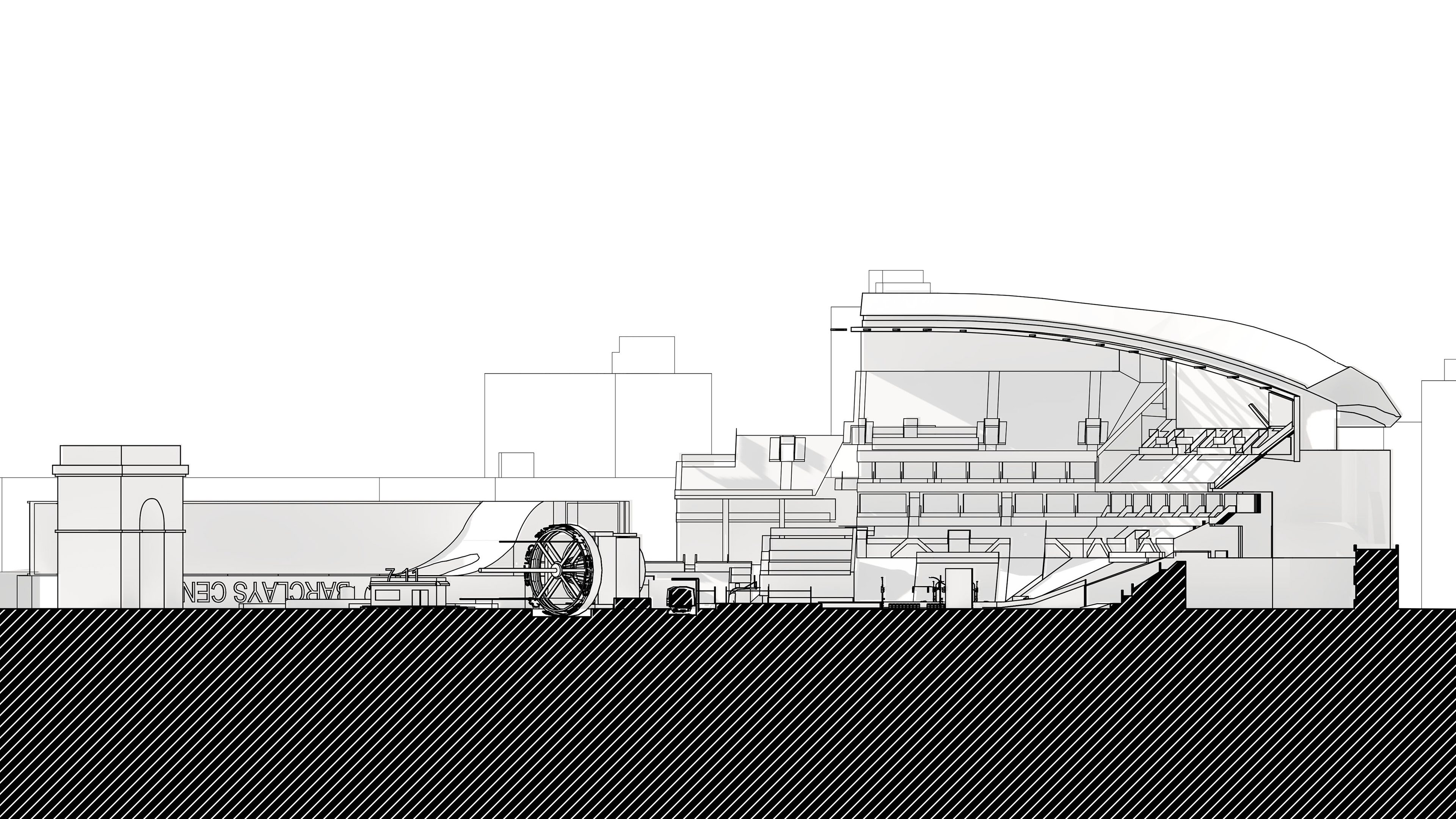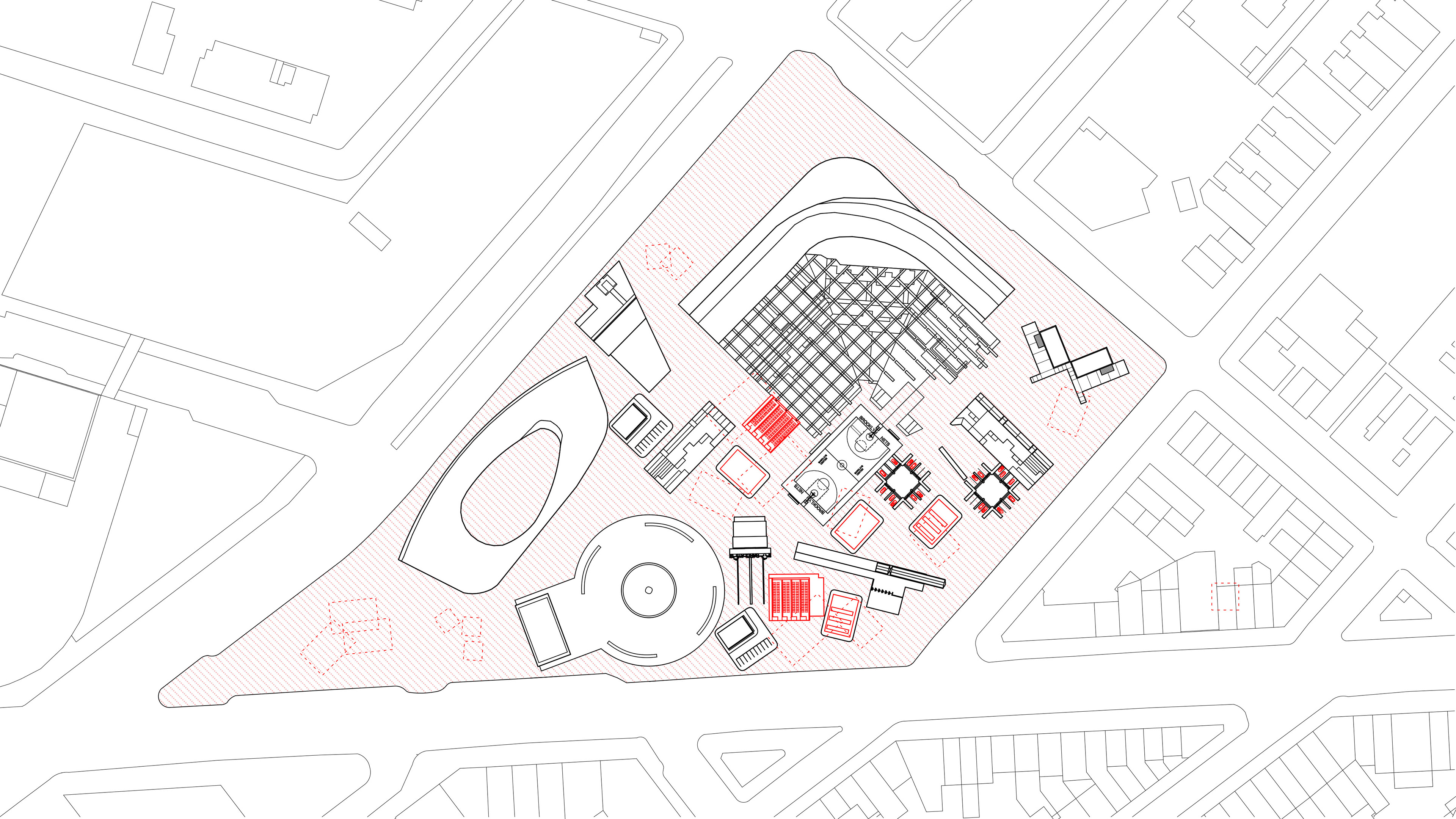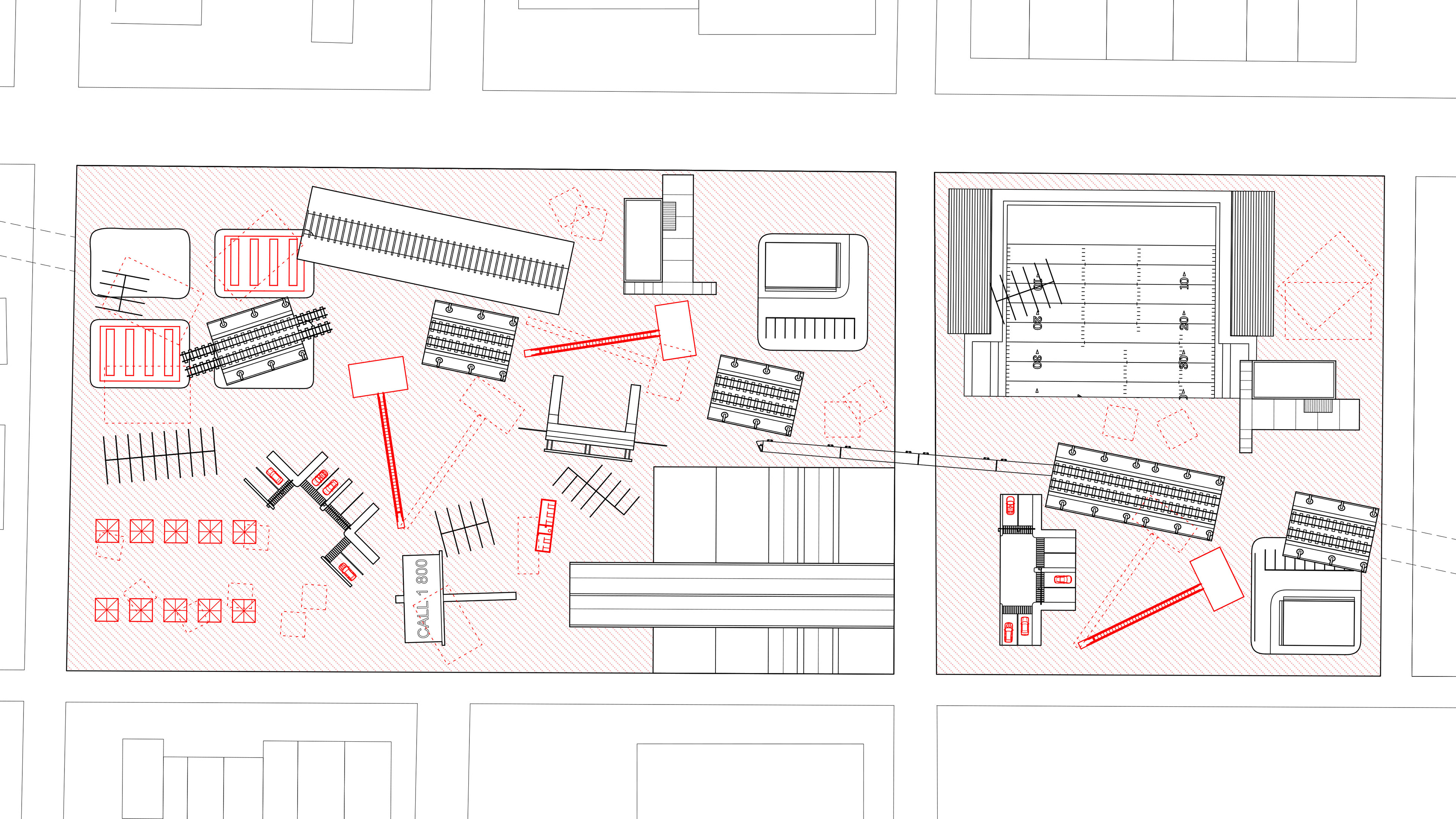view the final application of this project here.




the reconfiguration and reinvention of the architectural elements would allow for a critique of the universal public project that the site was destroyed for, and propose a new typology of vernacular that is a hybrid condition of the culture of the existing community as well as a new culture of open discussion and influence on the public realm - a true dismantling of the hegemonic influence on public space.





by superimposing ideals of agoric social forum onto architectural space, people will have the tools to socially, politically, and culturally express themselves through dissent, protest, argument, and more. we propose that some elements of the intervention would be transient and moveable for the will of the community it serves, and other elements would be fixed and foundational, acting as a social and structural framework for the project. we also introduce familiar vernacular elements like the empty lot, the sidewalk, and so on. hybrid conditions emerge where the two architectural languages - that of the univernacular on the site of eminent domain and the plurivernacular in our intervention - form uncanny spaces that would provoke an understanding of what community was there, what replaced it, and what the space could become.

